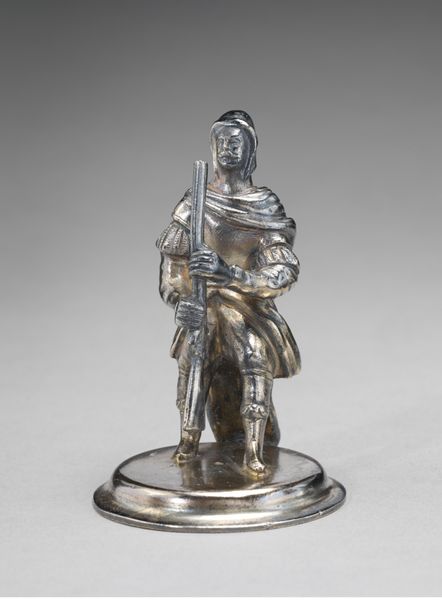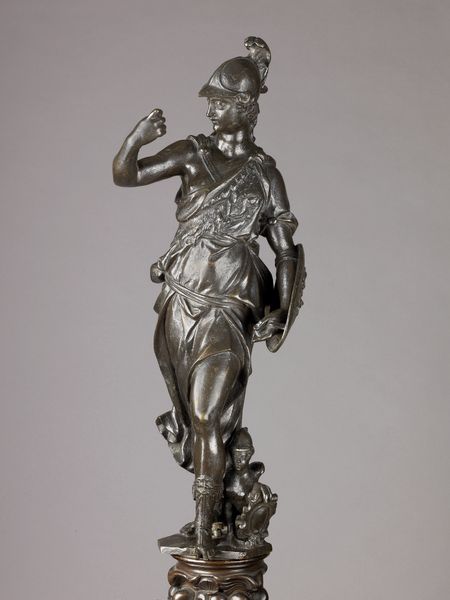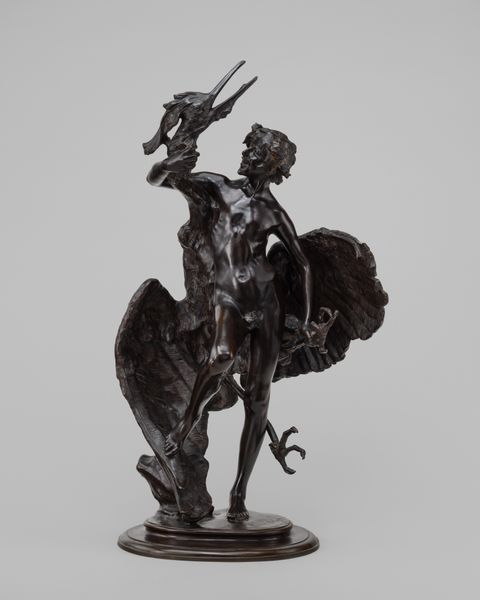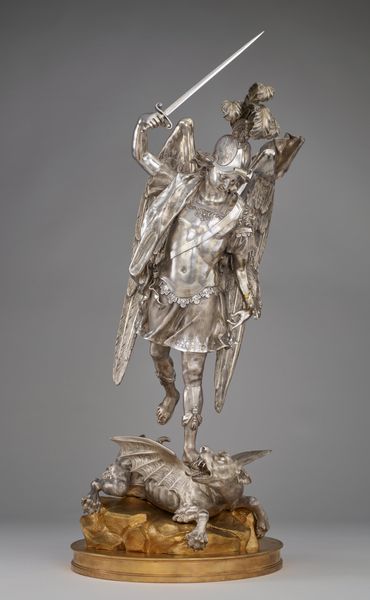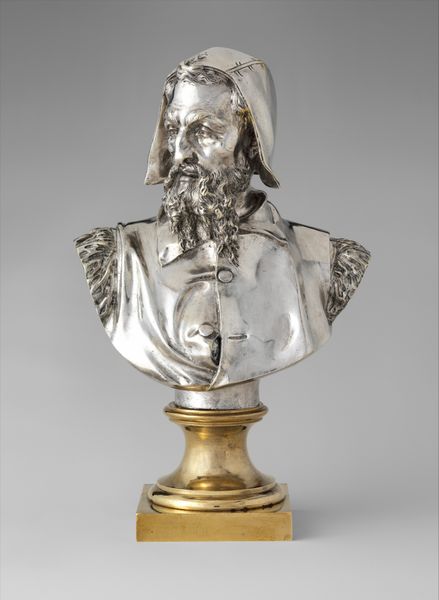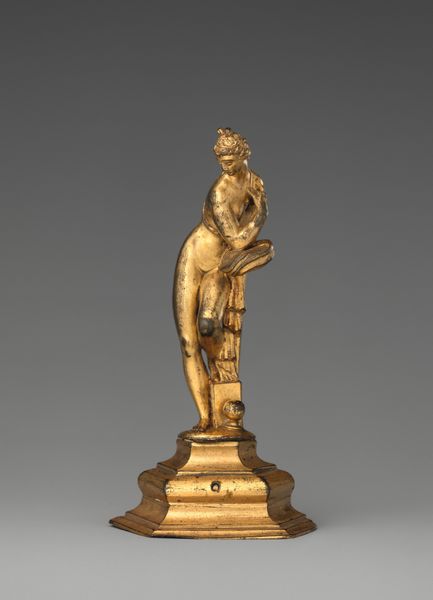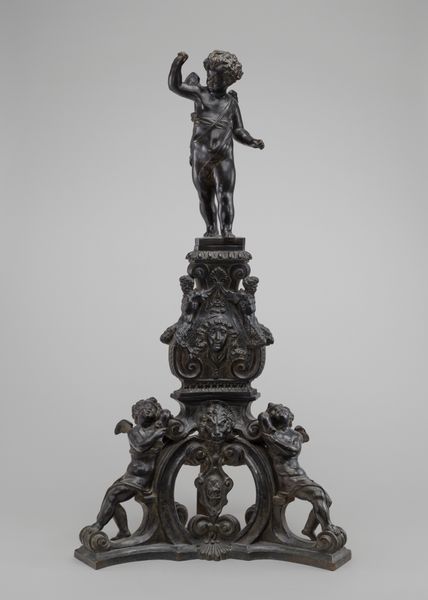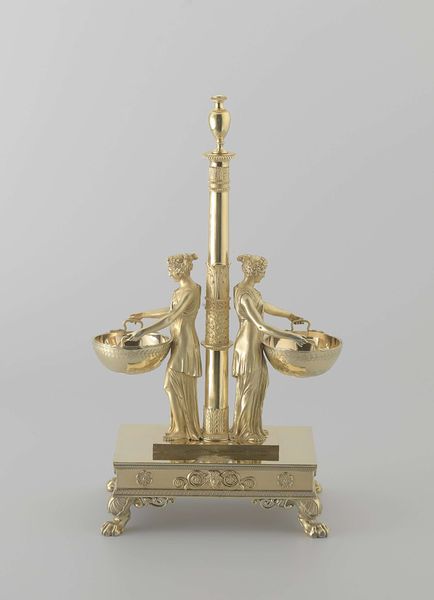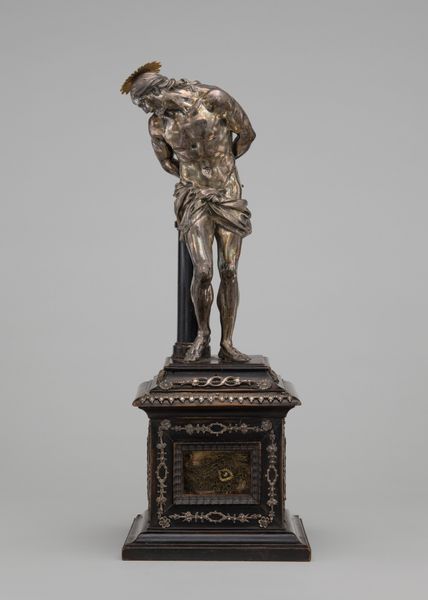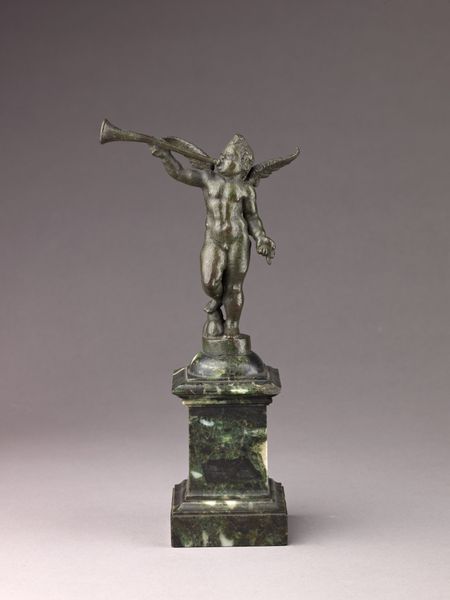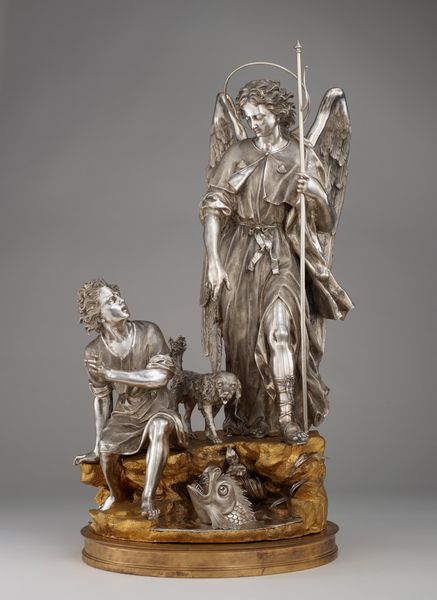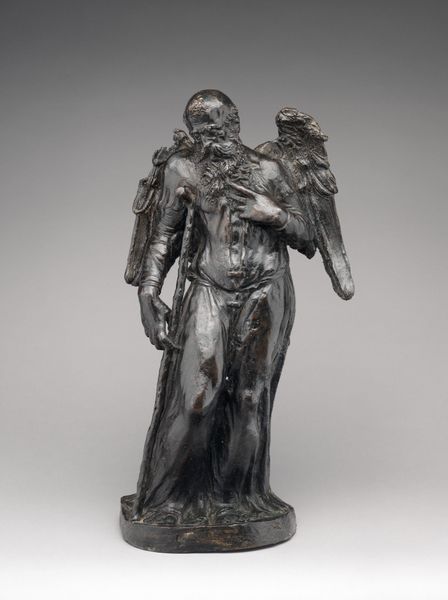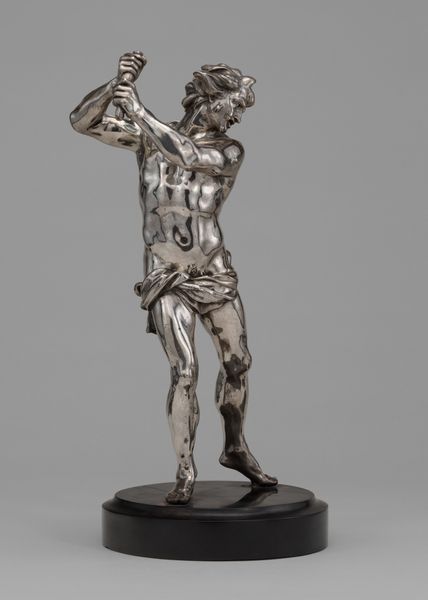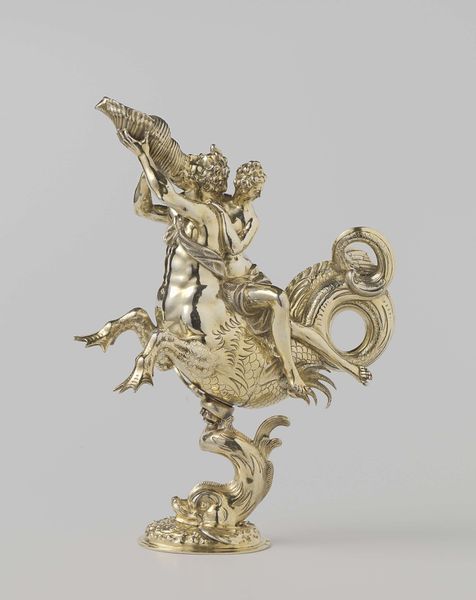
silver, sculpture
#
silver
#
baroque
#
figuration
#
sculpture
#
history-painting
#
decorative-art
Dimensions: Overall: 12 1/4 x 5 1/2 x 5 1/2 in. (31.1 x 14 x 14 cm)
Copyright: Public Domain
Curator: We're looking at "Saint Michael," a silver sculpture, likely dating from between 1740 and 1745, crafted by Gaetano Fumo. It's currently housed here at the Metropolitan Museum of Art. Editor: It’s remarkably bright and eye-catching. The material, that silvery surface, makes the figure radiate. The elaborate, almost overflowing detail suggests an attempt at glorification. Curator: Absolutely. Consider the Baroque style. It emphasizes movement, drama, and intricate detail. Gaetano Fumo was likely working in Naples at this time. We see him translating the powerful Saint Michael narrative into this small, yet grand decorative art object. Editor: Note the composition, too. Michael stands with such presence. The pose feels dynamic, poised mid-action, as if frozen in the midst of his celestial battle. How do you read the effect of his gaze and the way he brandishes a… a captured eagle instead of the traditional dragon? Curator: Traditionally, you'd see Saint Michael trampling the defeated Satan, often in dragon form. But in this case, he’s holding an eagle. Eagles can represent pride and temporal power. This might be a commentary on earthly pride, rather than just spiritual triumph. Consider the role of imagery in the era. How would a wealthy patron, maybe someone tied to Neapolitan power structures, view the silver statue of Saint Michael triumphing over the symbol of the Roman Empire itself? Editor: It's potent how the chosen emblem shifts the focus to specific power struggles, rooting a spiritual message in contemporary political contexts. This elevates what might seem a decorative piece into a really layered commentary on the meaning of dominance. Looking at it purely structurally, that ornate pedestal almost dwarfs the saint himself! Curator: The scale is important, it reinforces that this wasn't a statue to inspire prayer within a cathedral; rather, a statement object intended for a wealthy Neapolitan collector. Perhaps for display amidst their most prized possessions, as a daily reminder of values, lineage, or political stance. Editor: This object merges form and context so completely. By understanding this Baroque extravagance through a social and cultural lens, you can decode its visual language and engage directly with the politics it subtly portrays. Curator: I agree, examining the formal elements combined with historical contexts illuminates its true artistic depth. It invites a contemplation on artistry, faith, and the earthly battles that shape immortal tales.
Comments
No comments
Be the first to comment and join the conversation on the ultimate creative platform.
